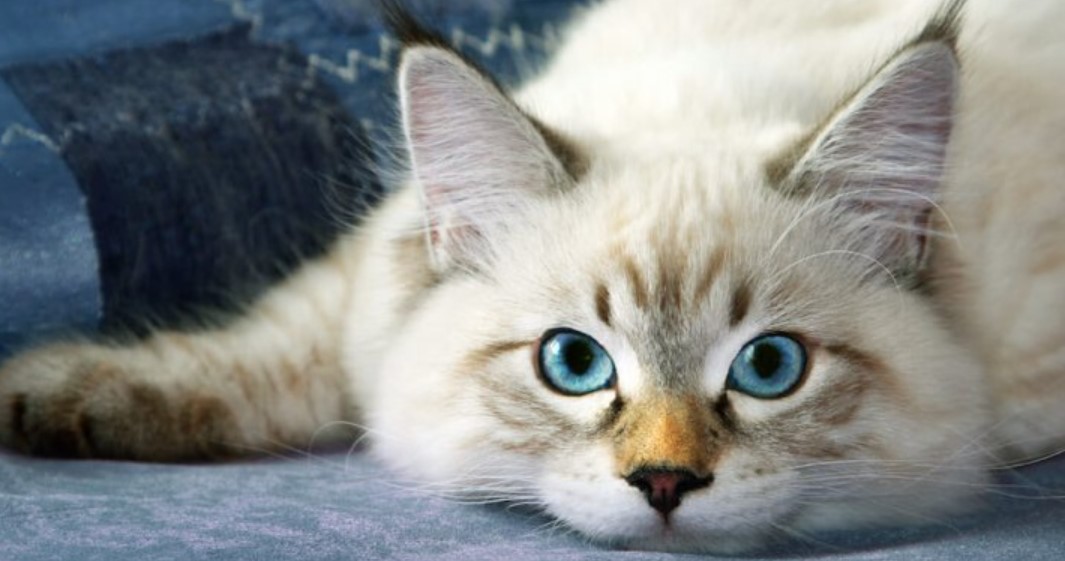“Newskaja Maskeradnaja”, that’s what the Neva Masquarade is called in its Russian homeland. It is the pointed variant of the Siberian cat and is referred to as the masked cat because of the color of its fur. Today it is listed in all umbrella organizations as a color variant (or point variant) of the Siberian cat. Incidentally, this is unique among all forest cat breeds, which include the Siberian cat and consequently the Nevskaya Maskeradnaya. In the course of recognition, she was given the international designation “Neva Masquarade”. Since January 1st, 2011, the FIFe has even listed it as an independent breed.
Size: Medium – Large
Weight: cat 4-6 kg / 5-9 kg
Life expectancy: about 17 years
Physique: Muscular, tall, rather ponderous
Coat colors: All point variants seal, blue, red, cream, seal/blue tortie, smoke, tabby and/or silver/golden, also allowed with white. The colourpoint variants chocolate, lilac, cinnamon and fawn are not permitted.
Distinctive features of appearance: Large, compact paws with tufts of hair between the toes.
Breed type: semi-longhair breed
Country of origin: Russia
FIFe, GCCF, WCF (CFA, TICA) recognized cat breeds
Typical diseases of the breed: No diseases known, caution before crossing with Somali, since hereditary diseases could be crossed.
The nature of the Neva Masquerade

Hangovers and diva behavior are alien to the Neva Masquarade. She is an easy-going, intelligent and family-friendly cat that has strong social skills. She gets along very well with other pets and children. In addition, their nature is characterized by a pronounced human-related attachment. She shows her “favorite people” a very special will to cuddle, in an almost intrusive way. If her master is not around, she likes to go on adventures or mouse hunts – of course in the great outdoors.
Appearance

In general, the Neva Masquarade is a muscular and relatively heavy cat with a strong build. It is medium to large in size, but does not reach the full dimensions of the Maine Coon. In addition, it is less long-legged than a Norwegian forest cat. It differs from the Siberian cat only in its mask markings. At the age of about three years they have reached their full size, an adult cat can reach a weight of up to 9 kg, female cats weigh an average of 5-6 kg.
Characteristic of this partially albino variant of the Siberian forest cat are its dark colored points, which stand in contrast to a clearly lighter body fur, which also earns it the name “mask cat”. The basis for this abnormality is a gene mutation (partial albinism), which leads to discoloration of the body fur. This phenomenon can also be found in the Siamese cat, which is also partially albino. Some body regions such as ears, legs, scrotum, face and tip of the tail are still colored in the corresponding basic color and form the points. Young cats are born light-colored, and the points only become more colored as they get older.
Another striking feature of the Neva Masquarade are their bright blue eyes, which are also due to this gene mutation.
The semi-long-haired coat of the pedigree cat consists on the one hand of water-repellent top coat and on the other hand of fine undercoat. There are assumptions that this double-layered coat is an evolutionary result of the harsh climatic conditions of Russia and Siberia. The winter coat of the Neva Masquarade is significantly longer, denser and has a lush undercoat than the summer coat. In addition, in the cold season, a lush fur collar forms on the neck and front chest (ruff) as well as the knickerbockers on the hind legs, which are typical of forest cats. Like the Siberian Forest Cat, the Neva Masquarade impresses with large eyes, a rather rounded head, rounded ears and a bushy tail. Her forehead is slightly rounded and flows gently into the bridge of her nose. Her deep set and wide cheekbones are striking. They often show up with fine hair tips on the ends of their ears (lynx tufts) and neat tufts of fur between their toes.
Colors and coat markings

The following applies to the Neva Masquerade: All basic colors that are permitted in the Siberian cat are also permitted in the Neva Masquerade in connection with the points that cause the typical appearance of the “Masked Cat”.
Color variants that are introduced through crossbreeding of other breeds are rejected. That would be cinnamon and fawn, as well as chocolate and lilac.
History and origin

The Neva Masquerade shares its history with its full-color sister, the Siberian cat, which has been known as a domestic cat in Russia for centuries and is still widespread today. It is believed that spontaneous point mutations occurred early in the Russian domestic cat population. Like the Maine Coon and the Norwegian cat, it belongs to the natural breed cats and at the same time to the forest cats. It is a cat breed that was able to develop without human intervention, has a large gene pool and is still rarely subject to breeding extremes. This makes them a decidedly healthy and robust pedigree cat.
“Unfortunately” it was decided in 2002 by the WCF General Assembly that, after approval by the judges’ commission, “mixed breed cats” (which were created by crossing in foreign breeds such as Somali cats) would be accepted for the show. However, since these foreign crosses can cause enormous health problems in the breed, most breed clubs do not recognize these hybrids as Siberian cats or Neva Masquerade. This is reserved for purebred masked cats only.





























